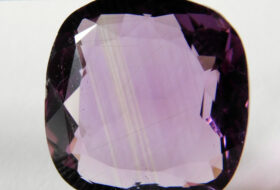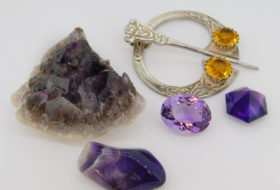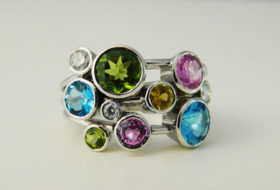It is compelling to me as a creative person to make something from natural raw materials and inspired by the landscape and environment in which they formed. It brings me a sense of completeness. Adding a human element to natural materials in the form of skills and imagination transforms these materials into something deeply meaningful. Recently, I was extremely fortunate be trusted with a natural Cairngorm quartz crystal by friends who live and work in the Cairngorms. They had found the crystal in a remote part of the mountains and I was given free rein to design and create a pendant for them that reflected its Scottish origin.
Scotland is rich in gemstones, particularly amongst the granite landscape of the Cairngorms. Its national gemstone is the Smokey Quartz, Cairngorm Stone or simply ‘Cairngorm’. These crystals are a brown or warm brown/orange colour and are found in the typical hexagonal forms. Once heavily collected, especially during Victorian times, they are now very rare.
Before the crystal was placed permanently into the piece I had designed, the pendant went off to the London Assay Office to be tested and stamped with its hallmark. As the pendant was made from two precious metals, a ‘part mark’ is added to the main hallmark before being lasered into the base of the pendant.
When the pendant had been returned to me, I gave most of the faceted faces a frosted finish and polished the curved faces as a contrast. Not only the structure but also the form and appearance of the pendant are all reflective of the natural landscape and materials I was immersed in when up in the Cairngorms and surrounded by their striking, gaunt and rugged beauty.
“How can I number the worlds to which the eye gives me entry? – the world of light, of colour, of shape, of shadow: of mathematical precision in the snowflake, the ice formation, the quartz crystal, the patterns of stamen and petal: of rhythm in the fluid curve and plunging line of the mountain faces.” – Nan Shepherd. The Living Mountain.











